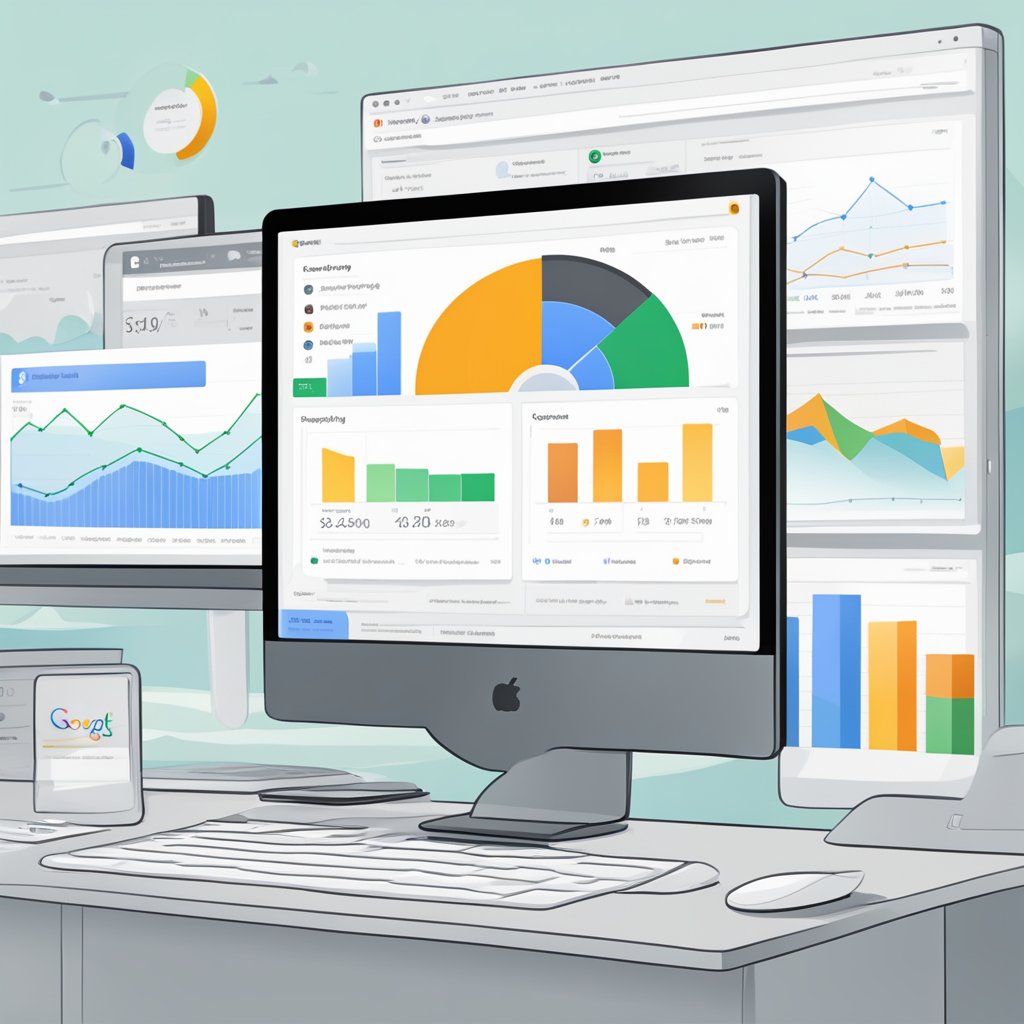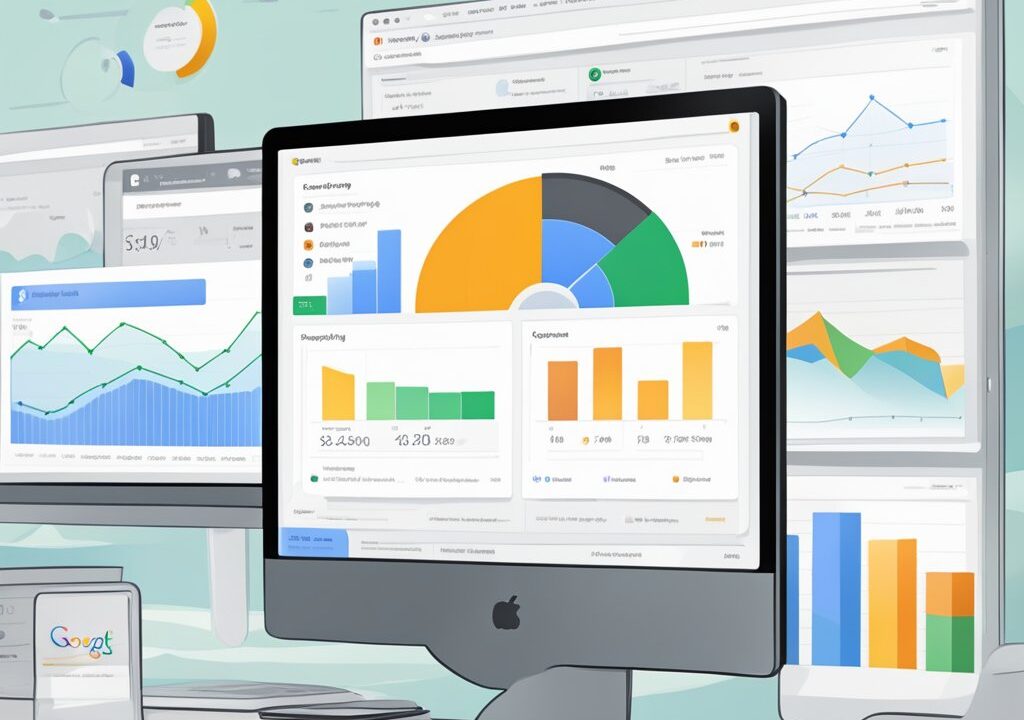Setting up Google Analytics for SEO is a crucial step in optimising your website’s performance and visibility. By implementing this powerful tool, you gain access to valuable insights about your site’s traffic, user behaviour, and content performance. Google Analytics provides essential data that can inform your SEO strategy, helping you make data-driven decisions to improve your site’s search engine rankings and overall effectiveness.

Creating a Google Analytics account is a straightforward process that involves setting up properties and data streams for your website. Once installed, you can track key metrics such as organic search traffic, bounce rates, and user engagement. These insights allow you to identify areas for improvement and measure the impact of your SEO efforts over time.
With Google Analytics properly configured, you can track user behaviour, analyse content performance, and gain a deeper understanding of your audience. This information is invaluable for refining your SEO strategies, creating more targeted content, and ultimately driving more organic traffic to your site.
Key Takeaways
- Google Analytics provides crucial data for informed SEO decision-making
- Proper setup enables tracking of key metrics like organic traffic and user engagement
- Analytics insights help refine SEO strategies and improve website performance
Understanding Google Analytics for SEO
Google Analytics provides crucial insights for optimising search engine performance. It offers valuable data on user behaviour, traffic sources, and content engagement that can inform and enhance SEO strategies.
The Role of Analytics in SEO Strategy
Google Analytics plays a vital role in shaping effective SEO strategies. It allows website owners to track user interactions and measure the success of their optimisation efforts. By analysing traffic patterns, marketers can identify which keywords and content resonate with their audience.
The platform reveals how visitors find and navigate a website. This information helps in refining site structure and improving user experience, both critical factors for search rankings. Analytics data also highlights opportunities for content creation by showing gaps in existing material.
With Google Analytics, SEO professionals can set goals and track conversions. This functionality enables them to measure the actual business impact of their optimisation work, beyond just traffic numbers.
Key Metrics to Monitor for SEO
Several essential metrics in Google Analytics provide valuable insights for SEO. Organic search traffic is a primary indicator of SEO performance, showing how many visitors arrive through search engines.
Bounce rate and time on page help gauge content quality and relevance. A high bounce rate may indicate misalignment between search queries and page content. Average session duration reflects overall site engagement.
Page load speed is another crucial metric, as it affects both user experience and search rankings. Google Analytics provides data on site speed, helping identify areas for improvement.
Conversion rates for organic traffic reveal how well the site turns visitors into customers or leads. This metric helps prioritise SEO efforts on the most valuable keywords and landing pages.
Setting Up Google Analytics
Setting up Google Analytics involves creating an account, configuring properties and views, and installing the tracking code on your website. These steps are crucial for collecting accurate data about your site’s performance and user behaviour.
Creating a Google Analytics Account
To begin, visit the Google Analytics website and sign in with your Google account. If you don’t have one, you’ll need to create it. Click on the ‘Start measuring’ button to initiate the setup process.
Choose a name for your account, typically your business name. Select the data sharing settings that align with your preferences. These settings determine how Google uses your data.
Next, set up your first property. A property represents your website or app. Enter your website’s name and URL, and select your industry category and reporting time zone.
Configuring Your Property and View
After creating your property, you’ll need to configure it. Choose between a web property or an app, depending on what you’re tracking. For websites, select ‘Web’ as the platform.
Set up a reporting view within your property. This view is where you’ll access your data and reports. Create filters to exclude internal traffic and set goals to track specific user actions.
Enable enhanced measurement features to automatically collect additional data like file downloads and video engagement. These features provide deeper insights into user interactions on your site.
Installing the Tracking Code
To collect data, you must add the Google Analytics tracking code to your website. Google provides a unique tracking ID for each property. Copy this code snippet from your Google Analytics account.
For WordPress sites, you can use a plugin to add the code easily. Alternatively, paste the code directly into your website’s HTML, just before the closing tag on every page you want to track.
Verify the installation by checking the real-time reports in your Google Analytics account. If set up correctly, you should see active users on your site within minutes.
Analysing Data for SEO Enhancement
Google Analytics provides valuable insights for improving search engine optimisation efforts. By examining key metrics and reports, website owners can make data-driven decisions to enhance their SEO strategies.
Interpreting Audience Reports
Audience reports offer crucial information about website visitors. These reports reveal demographics, interests, and behaviours of users, helping tailor content to target audiences.
Age and gender data guide content creation, ensuring it resonates with the primary audience. Geographic information aids in localising SEO efforts, optimising for specific regions or countries.
Device usage statistics highlight the importance of mobile optimisation. If a significant portion of traffic comes from mobile devices, improving mobile SEO becomes essential.
Analysing user interests helps in creating relevant content that aligns with audience preferences, potentially increasing engagement and reducing bounce rates.
Assessing Acquisition and Behaviour Reports
Acquisition reports shed light on how users find the website. The channels report shows the effectiveness of different traffic sources, including organic search, paid search, and referrals.
Organic search data reveals which keywords drive traffic. This information guides content strategy and identifies areas for improvement in search rankings.
Behaviour reports provide insights into user interactions on the site. Page views, average time on page, and bounce rates indicate content quality and relevance.
The site search report highlights what users are looking for, informing content gaps and potential new topics to cover. Exit pages point to areas where the site may be losing visitors, prompting improvements.
Evaluating Conversion Metrics
Conversion metrics are crucial for measuring SEO success. Goal completions and conversion rates show how well the site meets business objectives.
Setting up specific SEO-related goals, such as newsletter sign-ups or content downloads, helps track the effectiveness of organic search traffic in driving desired actions.
Analysing conversion paths reveals the role of organic search in the customer journey. This data informs decisions on optimising landing pages and improving user flow through the site.
Multi-channel funnel reports show how organic search interacts with other channels, providing a holistic view of SEO’s impact on conversions.
Frequently Asked Questions

Setting up Google Analytics for SEO involves several key steps and considerations. The following questions address common concerns and provide guidance for effectively utilising this powerful tool to enhance your website’s search engine optimisation efforts.
How do you integrate Google Analytics with your website?
To integrate Google Analytics, you’ll need to create a Google Analytics 4 account. Once you’ve set up your account, you’ll receive a unique tracking code.
Place this code in the header of your website’s HTML. Many content management systems offer plugins or built-in features to simplify this process.
What are the steps for configuring SEO reports in Google Analytics?
Configure SEO reports by setting up custom dashboards and reports focused on key SEO metrics. Start by identifying the most relevant data for your SEO goals.
Create segments to analyse organic traffic separately. Set up conversion goals to track SEO-driven actions on your site.
Can Google Analytics track the performance of specific keywords for SEO?
Google Analytics doesn’t provide direct keyword performance data due to privacy restrictions. However, you can gain insights by analysing landing page performance and using Google Search Console data.
Link your Search Console account to Google Analytics to access some keyword data within the Analytics interface.
Is there a cost associated with using Google Analytics for monitoring SEO metrics?
Google Analytics is completely free for basic use, including monitoring SEO metrics. The standard version offers a comprehensive set of tools and reports suitable for most websites.
For larger enterprises with advanced needs, Google offers Analytics 360, a paid version with additional features and higher data limits.
How do you link Google Search Console with Google Analytics for enhanced SEO insights?
To link Search Console with Analytics, ensure you have admin access to both tools. In Google Analytics, navigate to the Admin section and select ‘Property Settings’.
Under ‘Search Console’, click on ‘Adjust Search Console’ and follow the prompts to link your Search Console property to your Analytics account.
What essential metrics should you monitor in Google Analytics to improve SEO?
Key SEO metrics in Google Analytics include organic traffic, bounce rate, and average session duration. Monitor conversion rates for organic traffic to assess SEO effectiveness.
Track landing page performance to identify high-performing content. Analyse user behaviour metrics to understand how visitors interact with your site after arriving from search engines.



